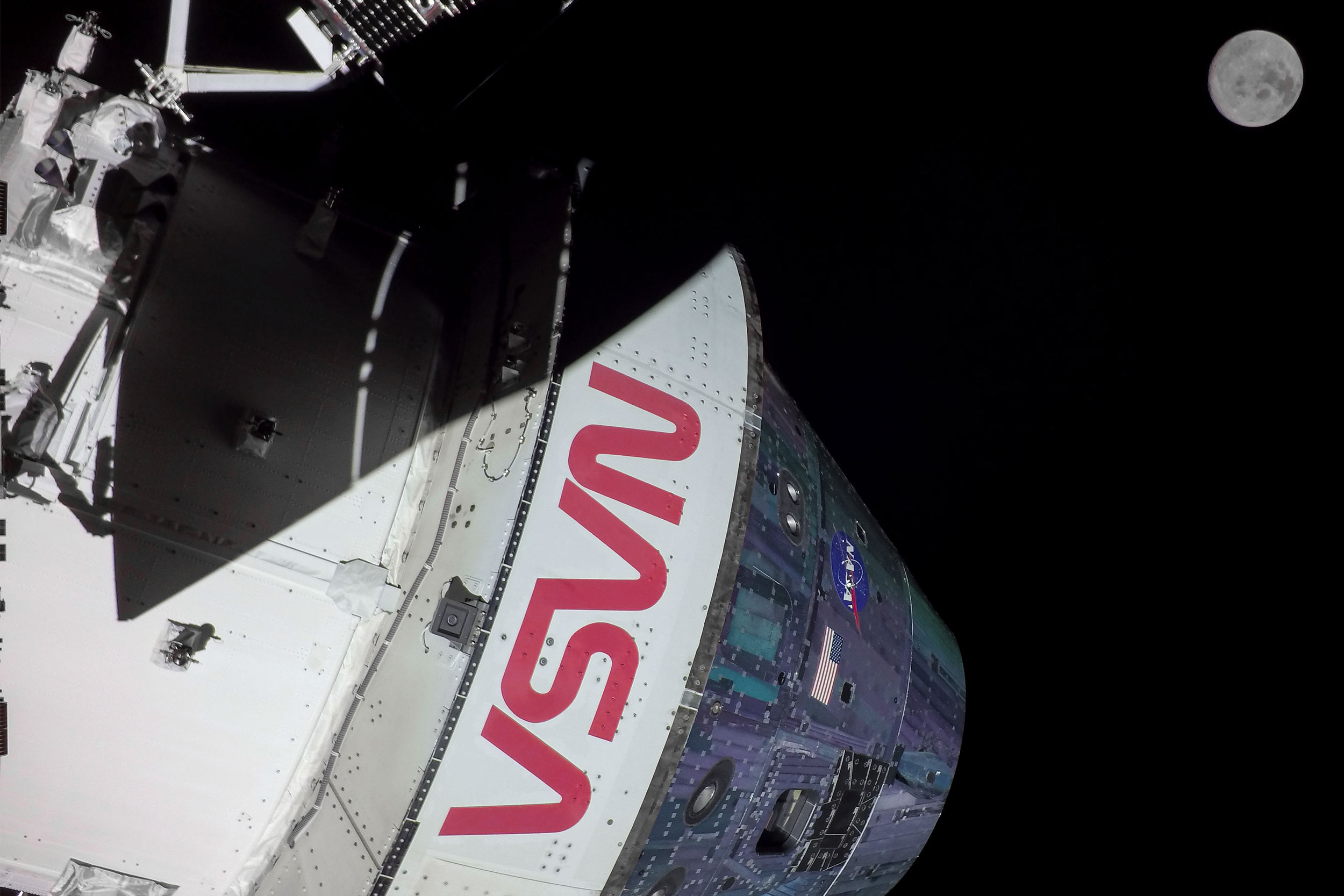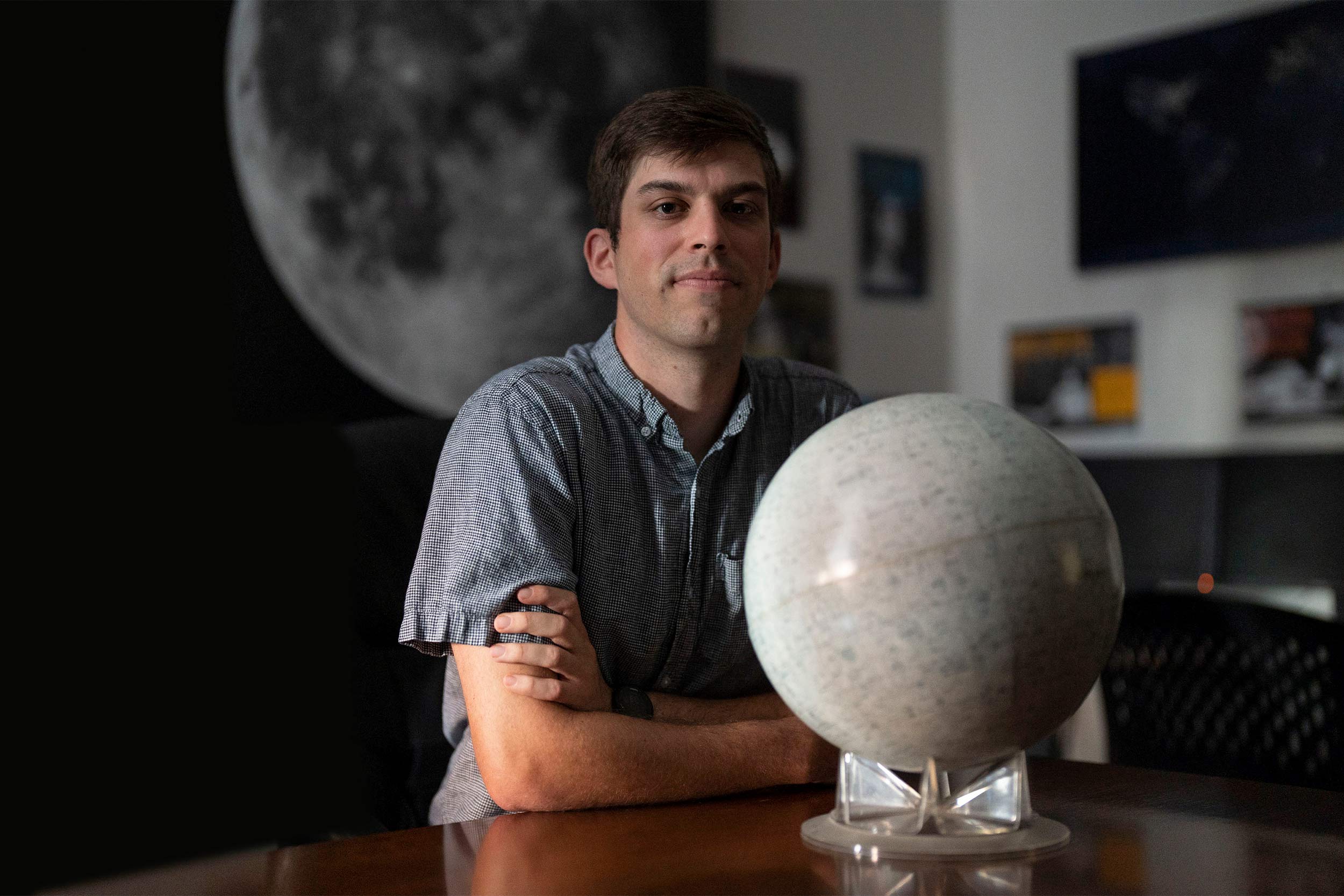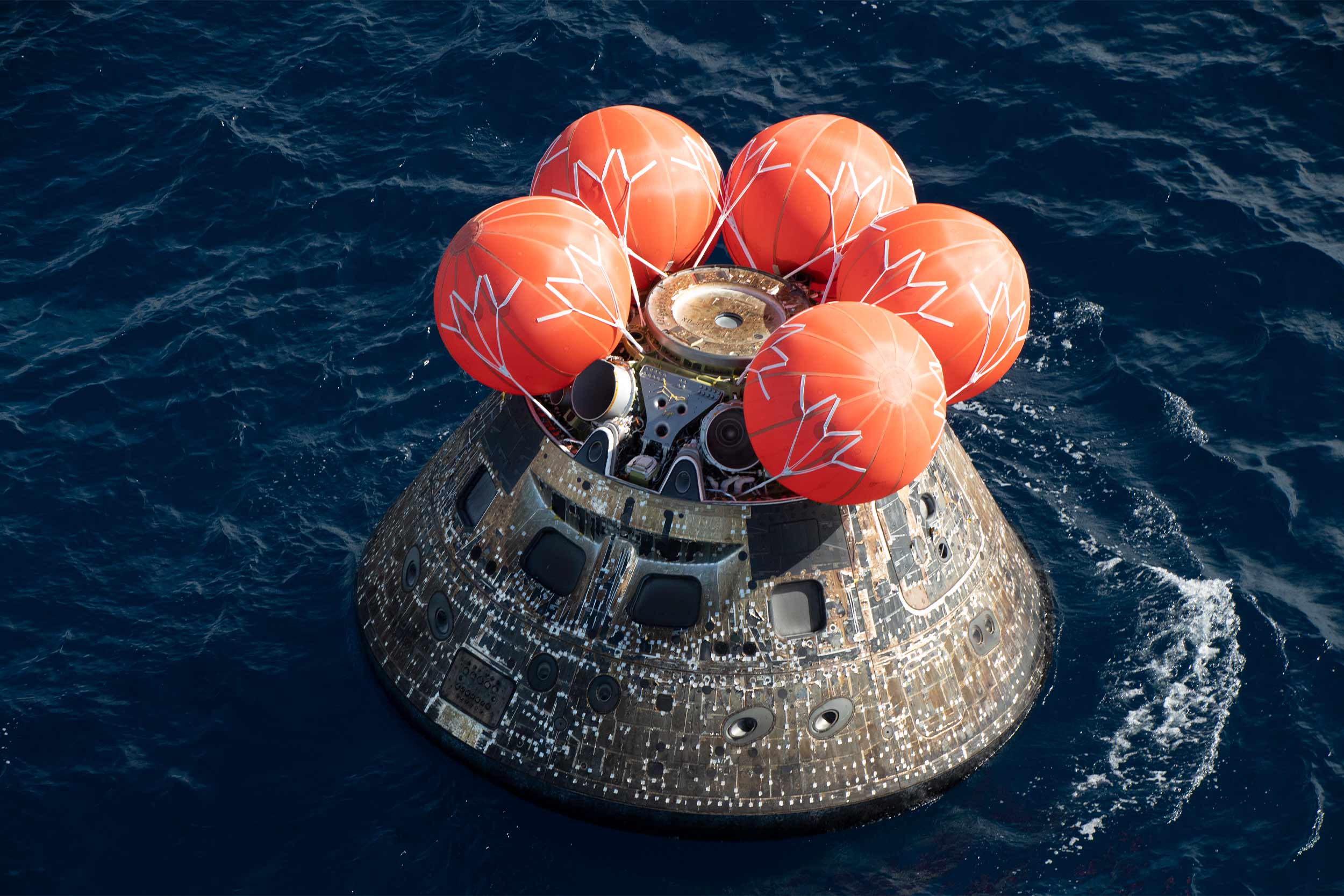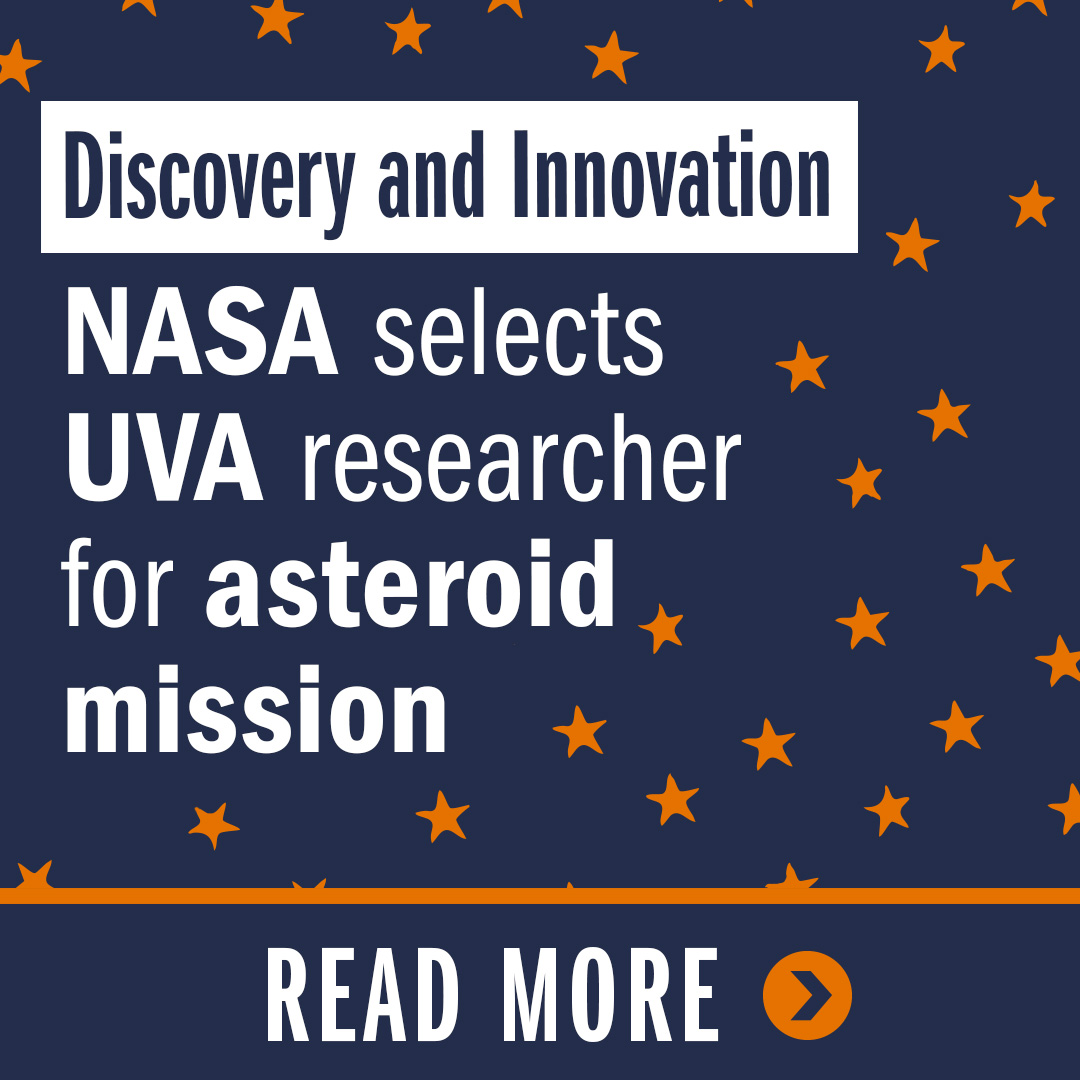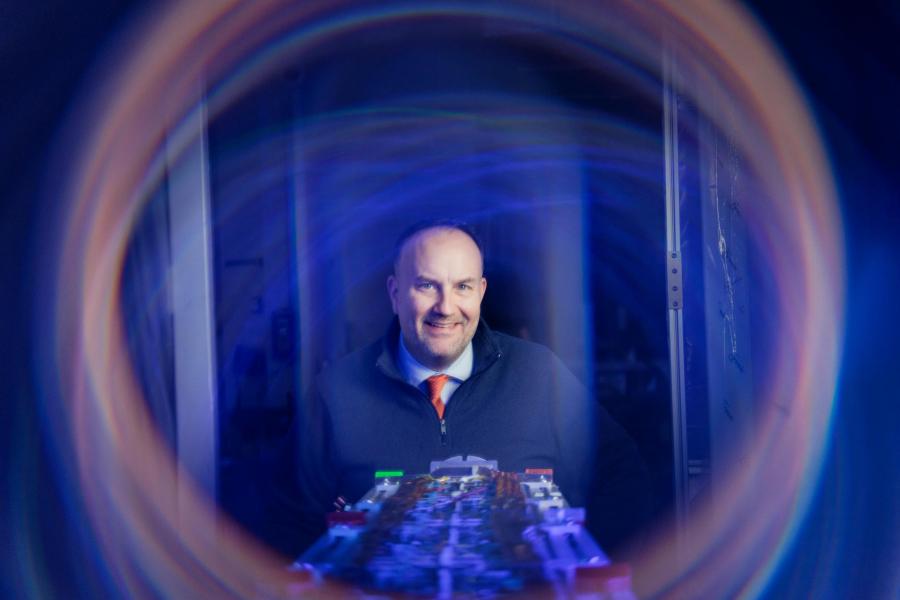The Orion space capsule has completed its uncrewed mission around the moon, the first step in returning humans to Earth’s natural satellite.
Humans have not trod on the moon since 1972. The Artemis Project, named after the twin sister of Apollo in Greek mythology, is a three-phase program intended to return people to the lunar surface. The much-delayed first stage of the mission launched Nov. 16 and returned to Earth safely on Dec. 11, after traveling 1.4 million miles circling the moon.
The Artemis project plans two more flights: a crewed flight with four astronauts in orbit around the moon, launching no earlier than 2024; and then the final flight, in which two members of the crew will land on the moon’s surface, tentatively in 2025.
UVA Today sat down with Matt Pryal, a University of Virginia assistant professor of astronomy, to discuss the success of Artemis I.
Q. What more do we know now that we did not before Artemis I?
A. We have confirmed that we have the capability to successfully launch spacecraft into a novel orbit around the moon and bring it safely back to Earth. Keep in mind this was primarily a data-gathering mission to ensure that we can take the next step and safely send humans to the moon and back. The Orion spacecraft was fitted with sensors and other tools throughout the capsule to see what worked as expected and what needs tweaking before the Artemis II crewed mission launches.
The intimate data processing will take time, which is why Artemis II won't launch at the earliest for about two more years. The real meat of what we learned will come from the data those sensors gathered. Immediate takeaways are that the space launch system works, the guidance/navigation systems work, the heat shields work, etc.
